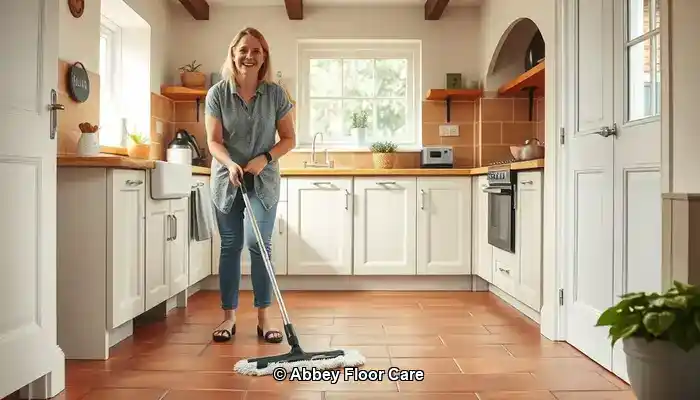
Last Updated on September 29, 2025 by David
Discover Proven Techniques for Maintaining Immaculate Terracotta Floors
-
- Understanding the Porous Nature of Terracotta is essential, as it makes the material prone to rapid dirt accumulation, particularly in humid climates like Surrey.
- Importance of Effective Sealing cannot be overstated; it safeguards the tile against moisture and dirt intrusion, thereby preserving the surface's integrity.
- <b>Regular Maintenance is Essential</b>—daily sweeping and weekly mopping with pH-neutral cleaners are vital for retaining the tile’s aesthetic appeal.
- Avoiding Harsh Chemicals and Steam Mops is crucial as they can damage the sealant and degrade the tile surface.
- Choose Eco-Friendly Cleaning Products, especially in households with pets or children.
- Engaging Professional Restoration Services ensures deep cleaning and resealing, providing long-lasting protection for your floors.
- Strategic Use of Rugs and Mats in high-traffic zones can significantly reduce dirt transfer onto the tiles.
- Controlling Moisture Effectively—ensuring adequate ventilation and swiftly addressing spills can prevent staining and mould development.
What Factors Cause Terracotta to Become Dirty So Quickly?
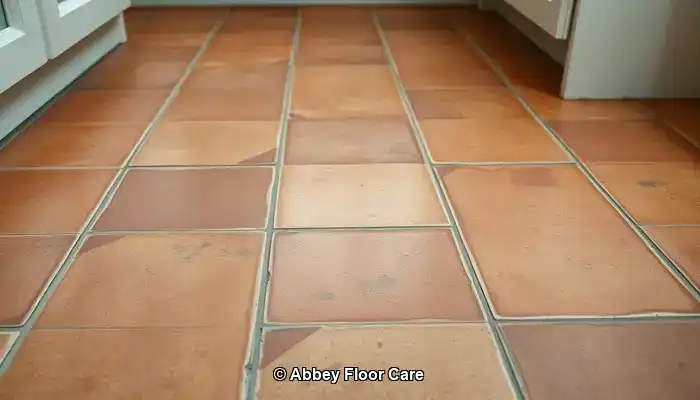
Terracotta tiles provide an elegant touch to flooring, especially in traditional and rustic-style homes throughout Surrey. Their warm hues and natural textures infuse any environment with character and charm. Yet, despite their visual appeal, terracotta is infamous for its rapid accumulation of dirt. Understanding the underlying causes of this phenomenon can lead to effective cleaning and maintenance strategies.
Expert Suggestions: Top Products for Daily Terracotta Maintenance
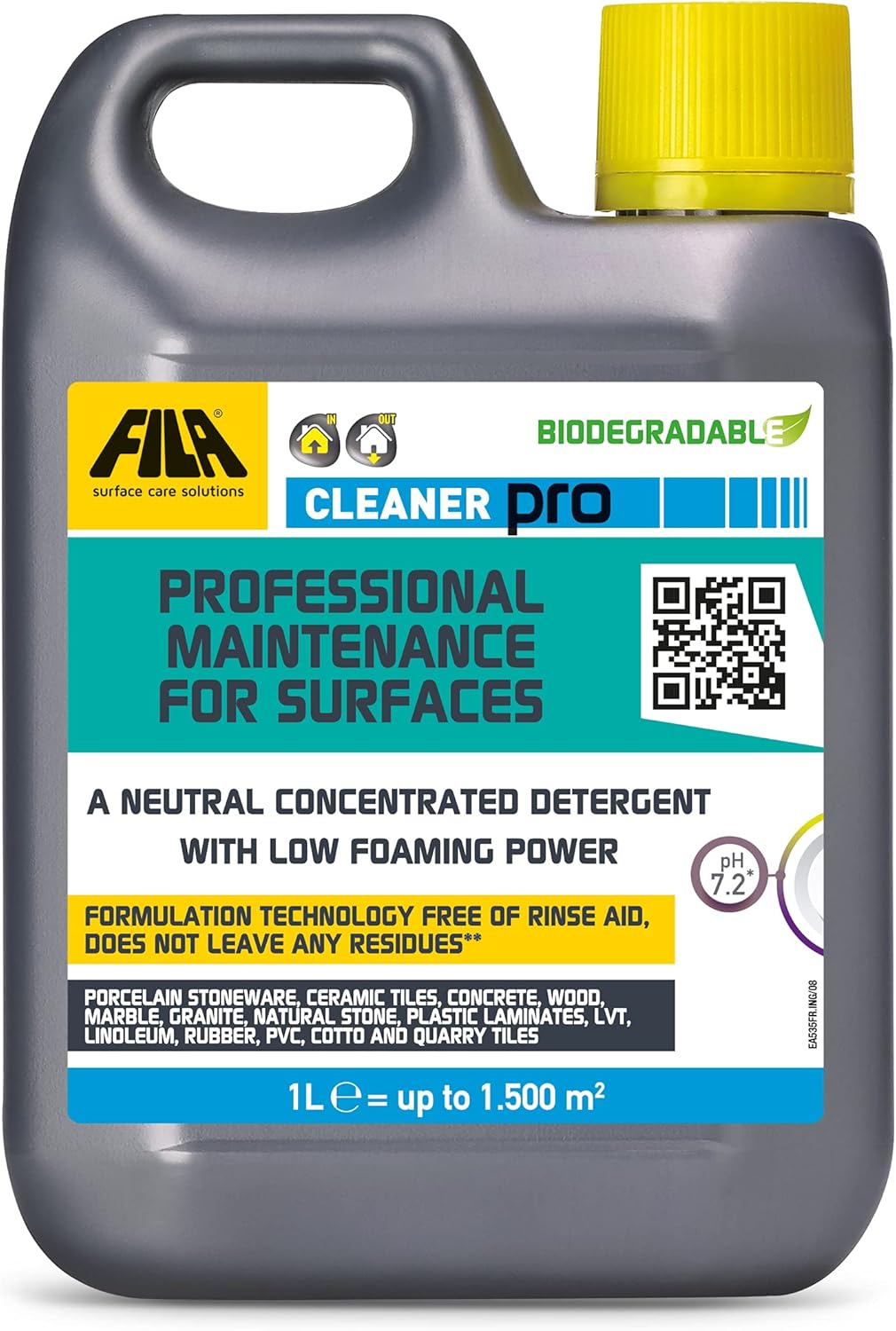
Fila Pro Floor Cleaner
|
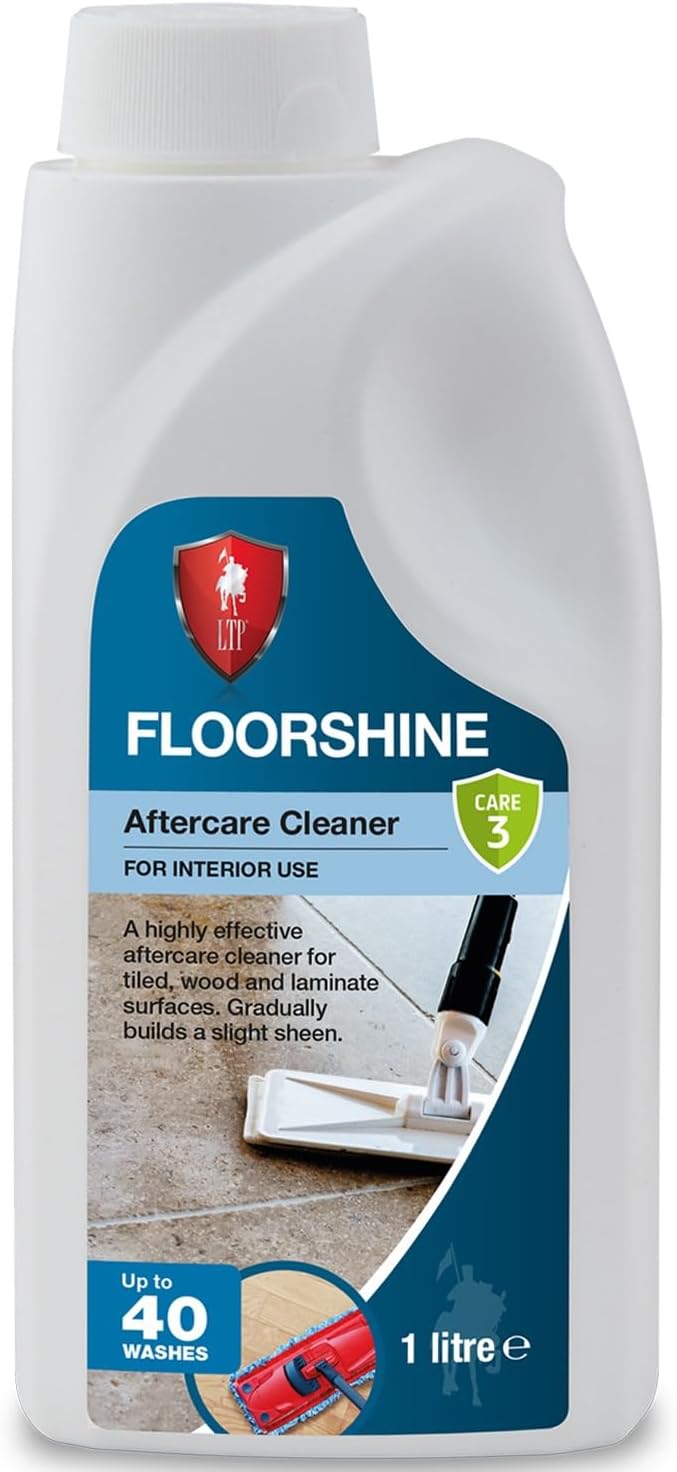
LTP Floorshine
|
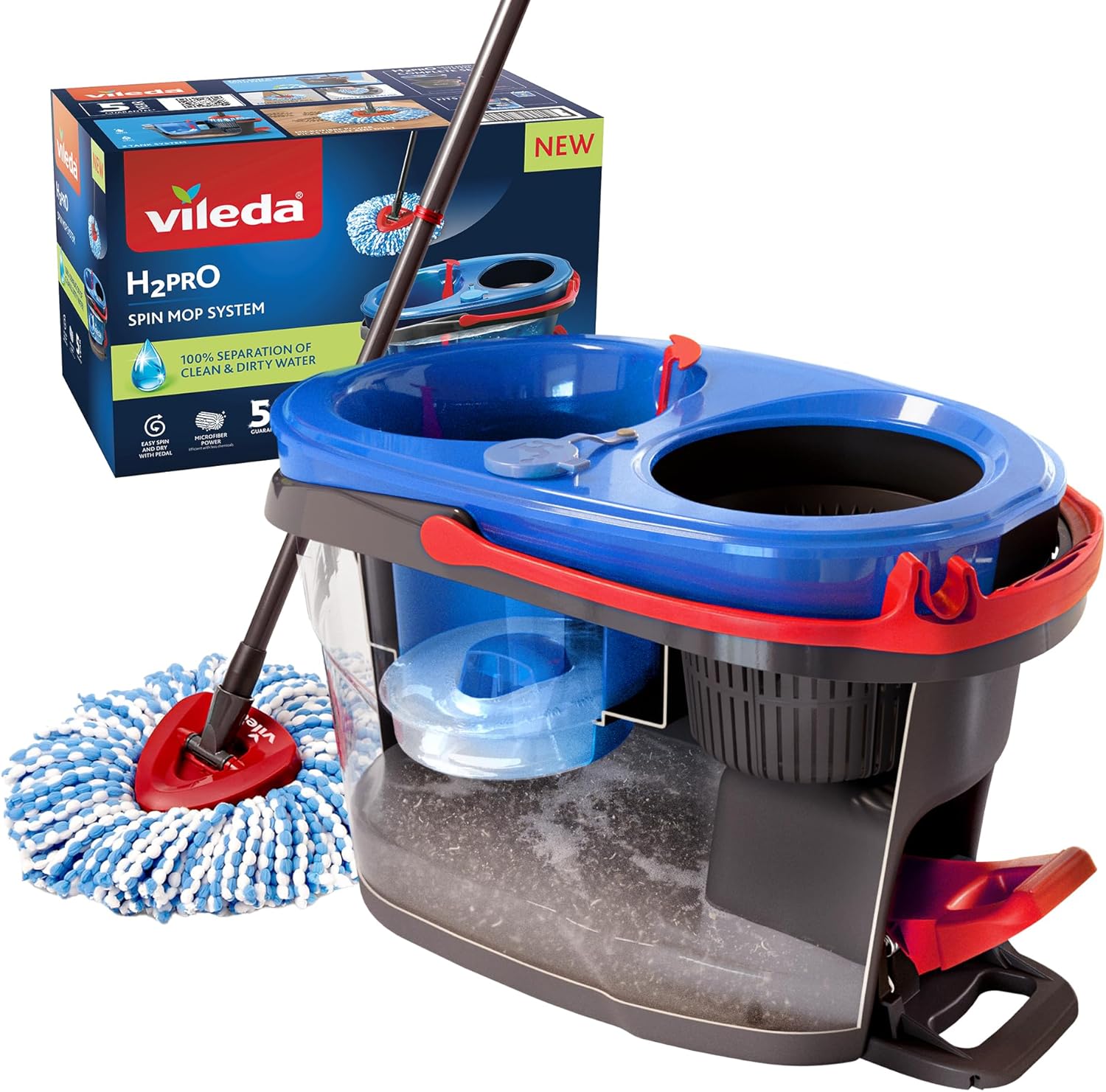
Vileda H2PrO Spin Mop System
|
Exploring Porosity: Understanding the Root of Dirt Accumulation on Terracotta
Terracotta is crafted from natural clay and fired at lower temperatures than other types of tiles, resulting in a highly porous surface. This porosity allows the tile to absorb moisture, oils, and grime, functioning similarly to a sponge. In everyday scenarios, this absorption facilitates grime's penetration deep into the tile, complicating removal using standard cleaning methods.
When terracotta is not sealed, its vulnerability increases significantly. Without a protective layer, even minor spills or muddy footprints can create enduring stains. Over time, this leads to a dull and stained appearance that is challenging to rectify without professional cleaning interventions.
How Does the Humid Climate of Surrey Impact Dirt Accumulation on Terracotta Floors?
The weather conditions in Surrey greatly influence the speed at which terracotta floors collect dirt. Frequent rainfall and overall dampness in the region lead to increased moisture being brought indoors, particularly in areas like entrance halls and conservatories.
Homes located near wooded areas or gardens are at an even higher risk. Soil, pollen, and organic debris can easily find their way onto terracotta surfaces, especially if footwear remains on indoors, exacerbating the issue.
Everyday Actions That Accelerate Dirt Build-Up on Terracotta Tiles
In addition to environmental factors, daily routines can significantly worsen the situation. Employing inappropriate cleaning products—such as acidic solutions or bleach—can degrade protective coatings and damage the tile surface. While steam mops are often favoured, they typically force moisture into the tile, complicating the cleaning process.
High-traffic zones, like kitchens and hallways, naturally endure more wear and tear. Without consistent sweeping and mopping, dirt can quickly accumulate and become ingrained in the tile's surface texture, making cleaning increasingly challenging.
Adopt Proactive Measures for Cleaner Terracotta Tiles
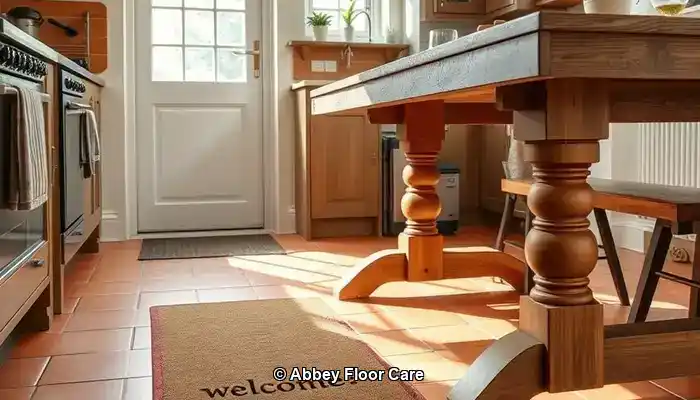
Maintaining terracotta floors in pristine condition requires more than merely reacting to dirt; it necessitates proactive strategies that prevent dirt from settling in the first place. In Surrey, where damp weather and garden-related foot traffic are prevalent, ongoing care is vital for preserving the inherent beauty of terracotta tiles.
Sealing: Your Primary Defence Against Dirt and Stains
The most effective method for preventing terracotta from becoming dirty quickly is to apply an appropriate sealant. A high-quality, breathable sealant creates a protective barrier against moisture, oils, and grime. This is especially crucial for homes in Surrey, where fluctuating humidity levels can lead to water absorption that causes staining and mould growth.
Experts typically recommend resealing terracotta tiles every 12 to 18 months, depending on foot traffic and environmental exposure. Areas with heavy use, such as kitchens, hallways, and conservatories, may require more frequent sealing. Always opt for a sealant specifically designed for porous stone and avoid glossy finishes that attract dirt.
Smart Design Choices: The Strategic Use of Rugs and Mats
Carefully chosen rugs and mats can significantly minimise the amount of dirt that reaches your terracotta tiles. Sturdy doormats at entrances are particularly efficient at trapping mud and moisture before it enters the home. In high-traffic locations like hallways or under dining tables, area rugs serve as protective barriers against wear and tear.
In areas that connect to outdoor spaces, consider using washable runners that can be cleaned regularly. These not only help to preserve the tiles but also contribute warmth and aesthetic appeal to your home.
Effectively Managing Moisture in Surrey Homes
The damp climate in Surrey can accelerate the gathering of dirt on terracotta. To counter this, consider using dehumidifiers in enclosed areas and ensuring adequate ventilation throughout your home. Promptly clean any spills and avoid leaving wet items, such as shoes or towels, on the floor.
If your terracotta flooring is located in a conservatory or garden room, contemplate installing blinds or UV filters to reduce condensation and protect against sunlight damage. These small adjustments can greatly enhance the longevity of your tiles over time.
By employing appropriate sealing, intelligent design choices, and moisture management, homeowners in Surrey can significantly slow the rate at which terracotta floors become dirty. In the subsequent section, we will explore the most effective cleaning methods to maintain that fresh, attractive appearance day in and day out.
Optimal Cleaning Techniques for Terracotta Tiles
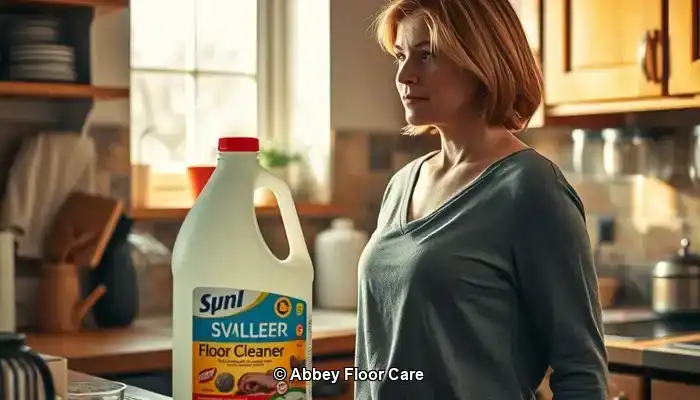
Even with proper sealing and preventative measures in place, terracotta floors demand regular maintenance to preserve their natural beauty. Success relies on utilising the correct cleaning techniques and products that are both effective and gentle on the tile’s porous surface.
Establishing Daily and Weekly Cleaning Routines
In Surrey homes, where outdoor elements frequently invade indoor spaces, daily sweeping or vacuuming is imperative. Use a soft-bristle broom or a vacuum cleaner set to hard floor mode to efficiently eliminate dust, grit, and organic debris before it settles into the tile.
For weekly cleaning, employ warm water alongside a pH-neutral cleaner specifically formulated for natural stone. It is vital to avoid soaking the floor—damp mopping is the advisable technique. Excess water can infiltrate the tile and result in staining or mould growth, particularly in older or inadequately sealed installations.
How to Choose the Right Cleaning Products for Terracotta
Select products that are both gentle and effective. Look for labels that indicate “stone-safe,” “non-acidic,” or “pH-neutral.” In Surrey, where eco-friendly practices are increasingly embraced, many homeowners prefer biodegradable cleaners that are safe for both pets and children.
Avoid multi-surface cleaners containing bleach, ammonia, or citrus extracts. These substances can strip away sealants and etch the terracotta, rendering it more vulnerable to future staining.
For stubborn stains, use a soft cloth and a diluted solution of a stone cleaner. Never scrub with abrasive pads or wire brushes, as these can scratch the surface and hinder future cleaning efforts.
What Cleaning Methods Should Be Avoided: Harsh Chemicals and Steam Cleaning
While steam mops may seem convenient, they are unsuitable for terracotta. The high heat and moisture can penetrate the tile, weakening the sealant and causing long-term damage. Similarly, acidic cleaners such as vinegar or lemon juice—even when diluted—can erode the tile’s surface and result in discolouration.
Stick to gentle cleaning methods and always conduct a test on a small, inconspicuous area before applying new products to the entire floor.
Determining the Need for Professional Care versus DIY Terracotta Maintenance
Many homeowners in Surrey initially depend on DIY strategies to care for their terracotta floors. While regular sweeping and mopping can be effective, there comes a time when professional assistance is not only beneficial but essential.
When Should You Reach Out to a Surrey Tile Specialist for Help?
If your terracotta tiles exhibit signs of deep staining, inconsistent colouration, or surface wear, it is wise to consult a professional. Specialists in Surrey utilise advanced equipment and stone-safe products that penetrate deeper than standard household cleaners. They can also evaluate if your sealant is compromised and recommend a resealing schedule tailored to your home's specific environmental conditions.
Restoration services generally encompass deep cleaning, stain removal, and reapplication of breathable sealants that protect without altering the tile’s natural appearance. For older or heritage properties, experts can even replicate the original finish to maintain authenticity.
Assessing Cost versus Longevity: Is Professional Assistance Justifiable?
While DIY cleaning may seem more cost-effective, it often yields only temporary results. Without proper sealing and thorough cleaning, dirt continues to accumulate, necessitating more frequent upkeep and risking permanent damage.
In contrast, professional care extends the lifespan of your terracotta floors. A single restoration service can rejuvenate colour, eliminate embedded grime, and safeguard the surface for months or even years. In high-traffic areas such as kitchens or hallways, this investment pays dividends by reducing maintenance frequency and enhancing aesthetic appeal.
Homeowners in Surrey who prioritise long-term property care and visual attractiveness often find that professional services provide peace of mind and superior outcomes. Furthermore, many local providers offer eco-friendly options and tailored maintenance plans to suit your lifestyle.
Exploring Eco-Friendly and Safe Cleaning Solutions for Terracotta
The natural allure of terracotta deserves maintenance that aligns with environmentally responsible principles. For homeowners in Surrey seeking to keep their floors clean without compromising health or environmental standards, eco-friendly cleaning alternatives are ideal. Fortunately, modern products and techniques simplify the task of protecting your tiles and home from harsh chemicals.
Opting for Non-Toxic Sealants and Cleaning Products
Conventional sealants often contain solvents that release volatile organic compounds (VOCs), which can linger in indoor air and adversely affect air quality. Today’s eco-friendly alternatives feature water-based formulations that are low in VOCs and safe for use around children and pets.
When selecting a cleaner, look for labels that indicate “biodegradable,” “plant-based,” or “stone-safe.” These products are engineered to lift dirt while preserving the porous surface of terracotta. Brands that specialise in natural stone care frequently offer concentrated solutions that can be diluted for everyday use, minimising waste and packaging.
Safe Cleaning Solutions for Households with Pets and Children
In bustling Surrey homes, safety is as crucial as cleanliness. Avoid bleach, ammonia, and acidic cleaners such as vinegar, which can damage the tile and pose risks to pets and small children. Instead, choose gentle formulas derived from coconut oil derivatives, citrus enzymes, or mineral-based ingredients.
For DIY enthusiasts, a simple mixture of warm water and a few drops of castile soap can prove surprisingly effective for light cleaning. Always remember to test any homemade solution on a small, inconspicuous area first to ensure it does not affect the sealant or finish.
Adopting Sustainable Cleaning Practices for Terracotta Care
Eco-friendly maintenance extends beyond products; it encompasses routines as well. Opt for reusable microfiber cloths and mops instead of disposable alternatives. Regular sweeping minimises the need for frequent wet cleaning. Additionally, when resealing, select products with recyclable packaging and minimal environmental impact.
Numerous floor care professionals in Surrey now offer green cleaning packages that utilise certified non-toxic products and sustainable methods. If you are unsure where to begin, consider scheduling a consultation with a local expert who can help create an effective and environmentally conscious routine.
Effective Strategies for Preserving the Pristine Appearance of Your Terracotta Floors
Terracotta flooring adds warmth and timeless character to Surrey homes; however, its porous nature requires diligent care to remain clean and vibrant. By recognising the causes of rapid dirt accumulation, properly sealing the tiles, and adopting intelligent cleaning practices, you can significantly reduce grime build-up and extend the lifespan of your tiles.
Whether managing a busy household or restoring a historic property, consistency is paramount. Daily sweeping, employing pH-neutral cleaning solutions, and seasonal resealing will greatly enhance the upkeep of your floors. Moreover, if stains or wear become apparent, do not hesitate to reach out to a local specialist for professional restoration.
Utilising eco-friendly products and safe cleaning techniques ensures your floors stay beautiful while maintaining health and environmental standards. With the right strategies in place, terracotta can continue to be a stunning feature in your home for many years to come.
Are you ready to protect your floors with an intelligent approach? Contact us today for expert terracotta maintenance tailored to the unique conditions of Surrey. Let us help you ensure your home remains at its finest—naturally.
Answers to Common Questions About Terracotta Maintenance
Terracotta floors may be timeless, but they require specific care to preserve their beauty. Below are responses to the most frequently asked questions from homeowners in Surrey eager to maintain their tiles clean, protected, and visually appealing.
How Frequently Should I Reseal My Terracotta Tiles?
In most Surrey homes, terracotta should be resealed every 12 to 18 months. However, this can vary based on foot traffic, moisture exposure, and whether the tiles are indoors or outdoors. Areas such as kitchens, hallways, and conservatories may require more frequent resealing. If your tiles begin to absorb water or appear dull, it’s time to reseal.
Is It Safe to Use Vinegar or Bleach on Terracotta?
No—vinegar, bleach, and other acidic or harsh cleaners can severely damage terracotta. These substances break down sealants and etch the tile surface, leading to permanent discolouration. Always use pH-neutral, stone-safe cleaning products designed for porous flooring.
What Is the Most Suitable Mop for Cleaning Terracotta Floors?
A microfiber mop is the best option. It effectively captures dust and dirt without scratching the surface and utilises minimal water, which is crucial for porous tiles like terracotta. Avoid sponge mops or steam mops, as they can oversaturate the tile and compromise the sealant.
Are Homemade Cleaning Solutions Safe to Use on Terracotta?
Yes, but caution is necessary. A mild mixture of warm water and castile soap can be effective for light cleaning. Always test any homemade solution on a small, inconspicuous area first. Avoid anything acidic or abrasive and refrain from using homemade cleaners on unsealed tiles.
What Should I Do If My Tiles Have Already Stained?
For established stains, professional restoration services are your best option. Tile care specialists in Surrey can provide deep cleaning, remove embedded grime, and reseal the surface to restore the tile’s original colour and texture. DIY methods may exacerbate the damage if incorrect products are used.
The Article Tired of Dirty Terracotta? How to Keep It Clean Longer first found on https://www.abbeyfloorcare.co.uk
The Article Dirty Terracotta: Tips for Keeping It Clean Longer appeared first on https://fabritec.org
The Article Terracotta Cleaning Tips for Long-Lasting Shine Was Found On https://limitsofstrategy.com





No responses yet